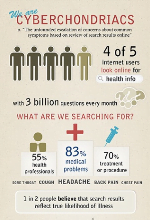There are two outcomes of the patient management software you chose for your facility. The system can either be a bust or a boon for you and your staff. This depends on the patient management software you settle for. There are plenty of challenges that come along with running a medical institution such as tight budgets, several patient concerns and many regulations from the government and insurance bodies. However, the patient management software has made it possible to automate most of these services making the process less tedious and more efficient. For those looking to acquire another patient software system or those looking to acquire it for the first time, there are many features that they should look out for, and they include:
Cost
This is the first thing that you should look for in a patient management software system. This will be determined by your current needs and the size of your practice. Patient management software price will range from $100 to thousands of dollars. Be aware of hidden charges that may come along with the patient management software system, and for this reason, request the manufacturer to give you a list of the charges that are associated with the software. Expect to spend more on the software due to breakdowns and maintenance. Also, ensure that you go for a product that has a proven 24/7 customer service as you may require the assistance of the support from time to time. In most cases, the patient management software price is the determining factor when acquiring the system. There may be other cheaper systems offering the same services. Do some due diligence before you decide to settle on one system? Also, don?t be too stingy as you may acquire a cheap system that will serve you for two-three years and breakdown completely.
Customizable and Easy to Use
It?s important to go for a patient management software system that is easy to use and navigate. This calls for you to go for the system with familiar features. For instance, most of your staff must be familiar with the electronic medical records software. Purchase a system with features similar to the EMR or one that resembles the EMR graphical user interface. Look for common features such as drop-down menus, a central dashboard, and the multi pop-up feature. Put into consideration that the medical field is experiencing rapid change due to technology. Patients can now use their mobile devices to acquire information about their health. This requires you to go for a system that makes it easy to improve interaction with patients. The system you acquire should be able to sort automated activities such as prompt appointment by a patient through the patient portal. Look for a system that can handle document management. Finally, the system should be easy to use in a way that it facilitates resource planning and can be able to conduct patient billing.
E-Prescribing and Internal Messaging
To reduce unnecessary explanations and paperwork, look whether the system allows for internal messaging and e-prescribing. E-prescribing is a feature that allows doctors and clinical officers to send patient prescription through the network to the pharmacy. This eliminates the need for phone calls and paperwork. This makes the process more secure, saves resources and ensures there is no time lost. Regarding internal messaging, look for a system that allows your staff to make and post notes in the system. This will help save time as the patient will not have to explain his condition to every staff he meets. Look for a system that makes it easier to see such things and even special payment arrangements.
Client-Server or Cloud-Based System
The client-server and the cloud-based systems are the commonly used systems in the market. Patient management software price is determined by the technology behind it. All said and done, look for a system that has IT support behind it. This is very crucial in case of a breakdown and maintenance. Go for the cloud-based system if you can afford it. With this system, your data is secure, and updates are automatic. Furthermore, a medical practice with no IT department should go for a cloud-based system. At the end of the day, choose a system that will serve your specialty without limitations and restrictions.









